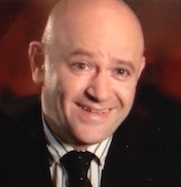THE ARTISTS

JUAN TRIGOS
COMPOSER & CONDUCTOR
Juan Trigos is a very active conductor and composer, creator of the concept Abstract Folklore. In his musical production are clearly distinguished two fundamental aspects: vocal music (opera and sacred) and instrumental music with a notable predilection for the concertante forms. His works has been performed worldwide. Among the most significant latest commissions his Symphony N.3 “Ofrenda a los muertos” for the Houston Symphony Orchestra (2013).

JUAN TRIGOS SYNISTER
PLAYWRIGHT (LIBRETTIST)
Creator of the aesthetic literary style Hemofiction. Literature of search which reflects on the bleeding of the consciousness in multiple mirrors, where it contemplates with horror the thousand faces of personal infantilism, process which endures desolation and anguish, indispensable symptoms on the road to individuation, path of ascension towards human. The works which have given him fame include La Llorona, La Leyenda de Don Juan Manuel, La Diabólica Santa de la Tijeras, Callejón de las ratas, Mamá es loca o está poseída, La Culpa.
THE OPERA
Synopsis
The central theme in the opera DeCachetitoRaspado (CheekToStubbledCheek) is the absence that the characters, Juansonrisa and Primancianita, fill up by projecting their imaginings. She is sterile, so she gives birth to two siamese sons who accompany them in all their theatrical improvisations. The story begins with the introduction of these beings of invention speaking about a baptism —imaginary as well—to which the president who has governed Mexico at diverse stages of the country’s life keeping the same criminal tendencies, will attend. Same imposing personality in collusion with the Church. There will be baptism with piñata-fractured heads. Instead of pulque, beer will run; instead of friends, compadres. Padrino (Godfather) will take requests. They have also invited the dead, Catalina and Antonia, fictitious portraits of Primancianita, to dance during the celebration. These illusory deceased are Juansonrisa’s lovers and also his victims, for he strangles them daily. Primancianita is hooked with Padrino-Presidente (Godfather-President) and wants to have sex with him. But the man of state is politically and carnally chaste. Tall. Güero (blond). Puts hands behind his back. Reads The Holy Bible. Goes to church after taking off his cassock. After washing his hands well. AfterPraying. AfterThinking of his madrecita santa (saintly mother). There is confusion between the real wedding of the protagonists and the imaginary wedding with Señor Presidente (Mister President) and with the baptism party to which a nonexistent priest attends.
Honeymoon in Cuernavaca. Primancianita affirms she was a virgin before marriage, and shows her red panties as proof. There is comic singing to virginity, as to the garter that will attract the love of our Señor Presidente. There is singing to the nation and the religious inquisitorial party, rambunctious institutional party, party that has ruled the country for many decades.
The opera concludes when Padrino-Presidente (Godfather-President) says that no one goes to the theater. What remains—beyond their fictional infidelities, beyond social conventions, beyond the games in which they pretend wanting to die and having wishes of killing one another—is the taste of the true love these two alcoholics feel for each other.
Horror-Hemoficción (Horror-Hemofiction) is a literary movement of search. It reflects the characters in a multitude of mirrors in which they contemplate, frightened, the thousand faces of their personal infantilism. The protagonists, human children, play at being serious adults, but are murderers or full of lies. In every novel, play, or short story, infantile cruelty invades. Perhaps, someday, spiritual awakening will lead to maturity, which would mean plenary responsibility from which all characters created by Juan Trigos Synister—precisely because they are human, that is to say, children—run away.
Horror-Hemoficción, always in jest, profound and amusing literature, opens doors to the personal conscience of the author and, by expansive reflection, is road towards the intimate knowledge of the reader who is capable of peeking into his or her own depths.
Juan Trigos Synister
Previous preformances
October 29 & 30, 2015
Singers:
Amy Sheffer (mezzosoprano)
César Torruella (baritone)
Daniela D’Ingiullo (soprano)
Esteban Cordero (tenor)
Co-choreographers, actresses and dancers:
Daniela Arroio and Anna Mariscal
Zeitgeist Chorus, directed by Deanna Joseph
Ensamble: Bent Frequency
Painter and scenographer: Luciano Trigos
Stage director: Luis Martín Solís
Conductor: Juan Trigos
XXVI Festival SpazioMusica
Chiostri di San Domenico, Cagliari (Italy).
Dicembre 8, 2007
Singers:
Gabriela Thierry (Mezzo)
Maurizio Leoni (Baritone)
Daniela D’Ingiullo (Soprano)
Oscar De La Torre (Tenor)
Actors:
Lorenzo Mijares (Juansonrisa)
Pino Ruberto (Siamese 2)
Players: Eastman BroadBand Ensemble
Paintings and Images: Luciano Trigos
Stage Director: Lorenzo Mijares
Conductor: Juan Trigos
XXV Foro Internacional de Música Nueva Manuel Enríquez
Teatro de las Artes, Mexico City.
November 3, 2003
Producers: Juan Trigos Synister and Juan Trigos
Co-producton: “Music Biennale Zagreb”, “Festival Internacional Cervantino” and Foro Internacional de Música Nueva “Manuel Enríquez”
XXXI Festival Internacional Cervantino
Teatro Principal. Guanajuato City (Mexico).
Octorber 29 e 30, 2003.
XXII Music Biennale Zagreb
Teatro Nazionale (Zagreb, Croatia)
April 4, 2003
Singers:
Claudia Montiel (Soprano)
Adriana Díaz de León (Mezzo)
Mario Hoyos (Tenor)
Benito Navarro (Baritone)
Actors: company “Teatro de Hemoficción”:
Bertha Vega (Primancianita)
Itzia Zerón (Siames I)
Julio Escartín (Juansonrisa)
Oscar Yoldi (Siames II)
Ensemble: Icarus-Cantus
Paintings and Costume Designer: Marianela de la Hoz
Stage Director: Lorenzo Mijares
Conductor: Juan Trigos
Festival Internacional Música y Escena
Teatro Helénico, Mexico City
September 20 and 21, 1999.
Co-production: Festival Internacional Música y Escena, Teatro Helénico and Fondo Nacional para la Cultura y las Artes (FONCA)
Singers:
Claudia Montiel (Soprano)
Adriana Díaz de León (Mezzo)
Elías Granados (Tenor)
Benito Navarro (Bariton)
Players: La Camerata de las Américas
Paintings and Costume Designer: Aldo Ciardiello
Stage Director: Raúl Falcó
Conductor: Juan Trigos
Producers: Juan Trigos Synister and Juan Trigos